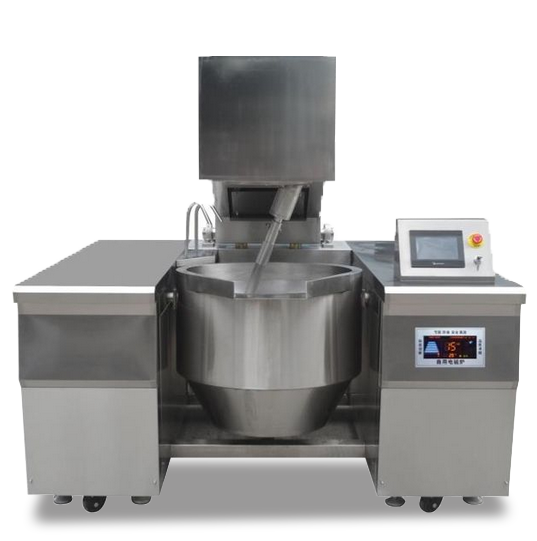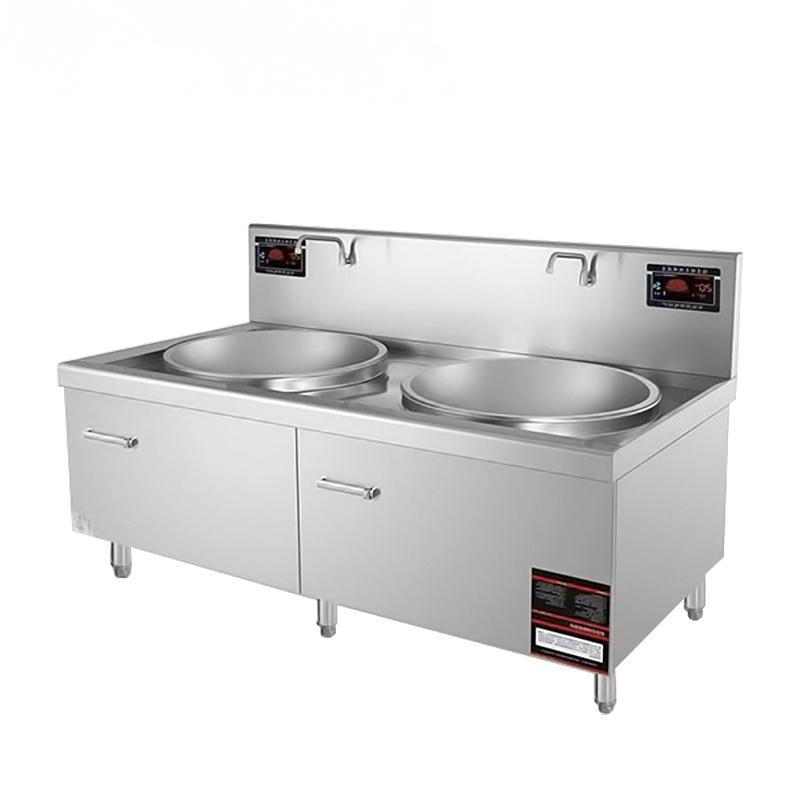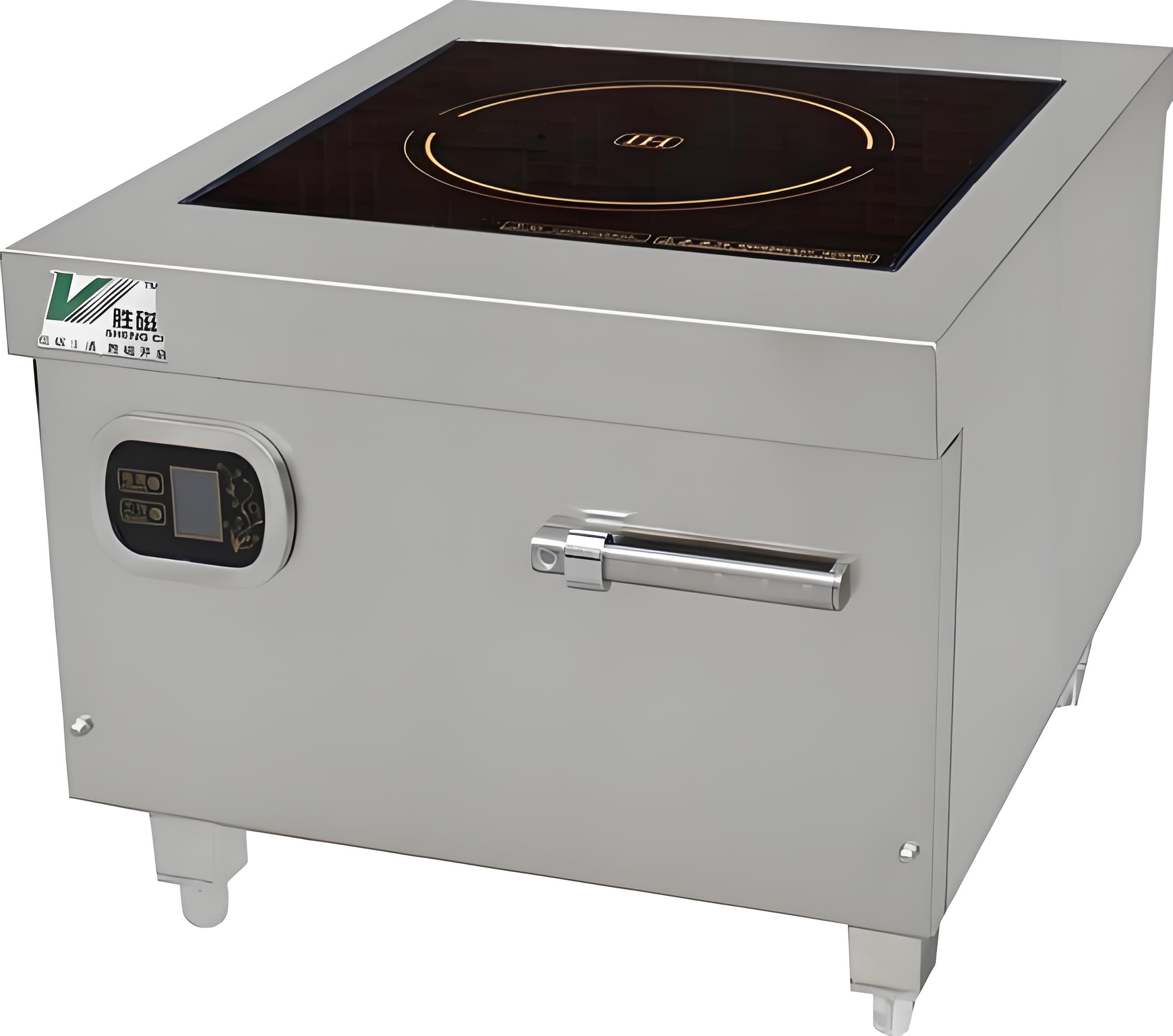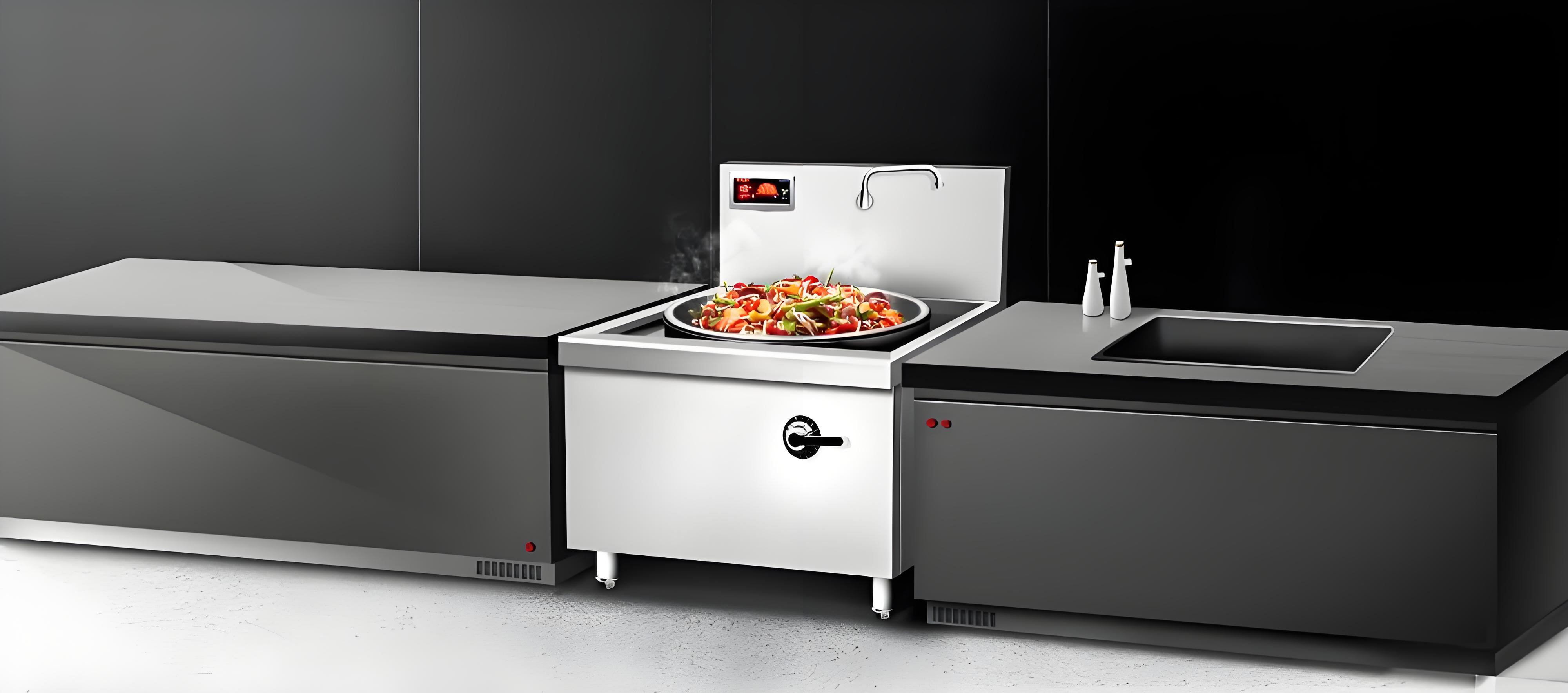In my nearly two decades working with commercial kitchen equipment, I’ve seen my fair share of mishaps, but few things stop a kitchen in its tracks like a cracked glass-ceramic plate on a high-power induction cooktop. It’s a gut-punch moment—your workhorse appliance, critical to churning out dishes in a busy restaurant, suddenly looks like a spiderweb of trouble. When someone asks, “What do I do if my induction cooktop’s glass-ceramic plate cracks?” I draw on years of troubleshooting and repair experience to offer practical, step-by-step advice. In this article, I’ll guide you through assessing the damage, deciding whether to repair or replace, and preventing future cracks, all while keeping your kitchen running smoothly.

Understanding the Glass-Ceramic Plate and Why It Matters
The glass-ceramic plate is the smooth, glossy surface of your induction cooktop, and it’s more than just a pretty face. It’s a specialized material designed to withstand high temperatures, resist thermal shock, and allow electromagnetic fields to pass through to heat your cookware. In commercial kitchens, where high-power cooktops (5 kW and up) are pushed to their limits, this plate takes a beating from heavy pots, constant use, and the occasional mishap.
A crack in the plate isn’t just a cosmetic issue—it can disrupt the cooktop’s ability to heat efficiently, compromise safety, and even damage internal components like the induction coils. I’ve seen kitchens try to “work around” a cracked plate, only to face bigger problems down the line. Let’s break down what to do if you’re facing this issue.
Step 1: Assess the Damage
When you notice a crack, your first instinct might be panic, but stay calm and take a closer look. Not all cracks are created equal, and the severity will determine your next steps. Here’s how I approach it based on years of diagnosing equipment issues:
Inspect the Crack’s Size and Location: Is it a hairline crack confined to one area, or does it spread across the cooking zone? Hairline cracks might still allow limited use, but large, branching cracks often render the cooktop unusable.
Check for Functionality: Test the cooktop (carefully!) to see if the affected zone still heats. If the crack is over a cooking zone, the electromagnetic field might be disrupted, leading to uneven or no heating.
Look for Shards or Loose Glass: If the surface is splintering or pieces are coming loose, stop using the cooktop immediately to avoid injury or further damage.
I once worked with a restaurant where a small hairline crack went unnoticed for weeks. They kept using the cooktop until the crack spread, damaging the internal sensors. A quick assessment early on could’ve saved them thousands in repairs.

Step 2: Stop Using the Cooktop (If Necessary)
Safety comes first. If the crack is severe—say, it’s spreading, creating sharp edges, or affecting multiple cooking zones—stop using the cooktop. Continuing to use a damaged unit risks:
Electrical Hazards: Cracks can expose internal components, potentially leading to shorts or shocks.
Further Damage: Heat and pressure from cooking can worsen the crack, damaging the coils or control board.
Food Safety Issues: Loose glass particles could contaminate food, a nightmare in a commercial kitchen.
If the crack is minor and isolated, you might be able to use unaffected zones temporarily, but proceed with caution and consult a technician ASAP. I always tell clients: when in doubt, unplug the unit and call for help.
Step 3: Decide Between Repair and Replacement
Once you’ve assessed the damage, the big question is whether to repair the glass-ceramic plate or replace the entire cooktop. Here’s how I guide clients through this decision:
Can the Glass-Ceramic Plate Be Repaired?
In most cases, a cracked glass-ceramic plate cannot be repaired. Unlike a chipped countertop, you can’t just patch it with epoxy. The plate is a precision component, and any repair attempt (like gluing or sealing) compromises its thermal and electromagnetic properties. However, some minor surface scratches can be polished out by professionals using specialized ceramic cleaners, but this is rare for actual cracks.
When to Replace the Glass-Ceramic Plate
For most high-power induction cooktops, replacing the glass-ceramic plate is possible but tricky. Here’s what I’ve learned from years of coordinating repairs:
Availability of Parts: Check with the manufacturer or supplier for a replacement plate. Brands like Vollrath or Hatco often stock parts for their commercial models, but availability depends on the cooktop’s age and model.
Cost Considerations: Replacing the plate can cost 20–40% of the cooktop’s original price, especially for high-power units. Labor costs for professional installation add to the bill.
Professional Installation: Swapping out the plate requires disassembling the cooktop, which involves delicate electronics. I strongly recommend hiring a certified technician to avoid damaging the coils or sensors.

When to Replace the Entire Cooktop
In some cases, replacing the whole unit makes more sense. I’ve advised clients to go this route when:
The cooktop is old (7+ years) and nearing the end of its lifespan.
The crack has damaged internal components, like the induction coils or control board, making repairs uneconomical.
Replacement parts are unavailable or cost-prohibitive.
For example, I once helped a catering company with a 10-year-old cooktop that had a shattered plate. The replacement part was discontinued, and repairs would’ve cost nearly as much as a new unit. They opted for a newer, more efficient model, which saved them money in the long run.
Here’s a table to help you weigh the repair vs. replacement decision:
|
Factor |
Repair (Replace Plate) |
Replace Cooktop |
Key Consideration |
|---|---|---|---|
|
Cost |
$200–$800 (parts + labor) |
$1,500–$5,000+ |
Compare to cooktop’s original cost |
|
Cooktop Age |
Best for newer units |
Best for older units |
Older units may have other failing parts |
|
Part Availability |
Depends on model |
N/A |
Check with manufacturer |
|
Downtime |
1–3 days |
1–2 days |
Plan for kitchen workflow disruptions |
Step 4: Contact the Manufacturer or a Technician
Once you’ve decided on repair or replacement, reach out to the manufacturer or a certified technician. Here’s how to handle it based on my experience:
Check the Warranty: If your cooktop is under warranty (typically 1–3 years for commercial units), contact the manufacturer immediately. A crack caused by a manufacturing defect might be covered, though user-caused damage usually isn’t.
Find a Certified Technician: Use the manufacturer’s service network or a reputable repair service. I’ve seen kitchens try to cut corners with unqualified techs, only to end up with bigger problems.
Provide Detailed Information: Share the cooktop’s model number, the extent of the crack, and any error codes displayed. This helps the technician prepare the right parts and tools.
Pro tip: Keep your cooktop’s manual and purchase records handy. They often include service contact info and can speed up the process.

Step 5: Temporary Workarounds for Your Kitchen
A cracked cooktop can disrupt a busy kitchen, and I know how critical it is to keep operations running. Here are some workarounds I’ve seen kitchens use while waiting for repairs:
Use Unaffected Zones: If the crack is isolated to one zone, you might be able to use other zones cautiously. Test them first to ensure they’re functioning.
Rely on Backup Equipment: If you have other cooktops or portable induction units, lean on those temporarily. I once helped a restaurant borrow a portable unit from a supplier to get through a busy weekend.
Adjust the Menu: Shift to dishes that require less cooking power or use alternative equipment like ovens or grills.
These are stopgap measures—don’t rely on them long-term, as they can strain your workflow or other equipment.
Preventing Future Cracks
After dealing with a cracked plate, the last thing you want is a repeat incident. Based on my years of working with commercial kitchens, here are the top ways to prevent cracks:
Use Proper Cookware: Stick to flat-bottomed, induction-compatible pans (stainless steel or cast iron). Warped or rough-bottomed pans can stress the glass-ceramic surface.
Avoid Heavy Impacts: Dropping heavy pots or slamming them onto the cooktop is a common cause of cracks. I’ve seen this happen in chaotic kitchens where staff rush during peak hours.
Handle Thermal Shock Carefully: Don’t place cold, wet pans on a hot cooktop, as sudden temperature changes can cause cracks. Let the cooktop cool before cleaning with cold water.
Regular Cleaning: Grit, food particles, or hardened spills can act like sandpaper under heavy cookware, leading to micro-cracks. Clean the surface daily with a soft cloth and mild cleaner.
Staff Training: Train your team on proper cooktop use, emphasizing gentle handling and compatible cookware. I’ve seen well-trained staff make a huge difference in equipment longevity.
One restaurant I worked with reduced damage incidents by 80% after implementing a simple staff training session on cooktop care. It’s amazing how small changes add up.
Common Causes of Glass-Ceramic Plate Cracks
To give you a clearer picture, here’s a breakdown of the most common reasons for cracks, based on my observations in the field:
Impact Damage: Dropping a heavy pot or utensil on the surface is the top culprit. In one case, a chef accidentally dropped a 10-pound cast iron skillet, causing an instant crack.
Thermal Shock: Rapid temperature changes, like placing a frozen pan on a hot cooktop, can stress the glass-ceramic material.
Manufacturing Defects: Rare, but possible. A defect in the plate’s production can lead to cracks under normal use. This is usually covered by warranty.
Wear and Tear: Over time, micro-scratches from improper cleaning or cookware can weaken the surface, making it prone to cracking.
Understanding these causes helps you take proactive steps to protect your cooktop.

Why I Believe in Proactive Care
Having seen countless kitchens navigate equipment challenges, I can’t stress enough how important it is to act quickly when a crack appears. A damaged glass-ceramic plate isn’t just an inconvenience—it’s a potential safety hazard and a threat to your kitchen’s efficiency. By assessing the damage, deciding on repair or replacement, and taking steps to prevent future issues, you can keep your high-power induction cooktop running like a champ.
In my experience, the kitchens that thrive are the ones that treat their equipment with respect, train their staff, and stay on top of maintenance. A cracked plate is a setback, but it’s also an opportunity to learn and improve how you care for your cooktop.

Related Questions and Answers
Here are some common questions I’ve heard from chefs and kitchen managers about cracked induction cooktops, along with my answers:
Q: Can I keep using a cooktop with a small crack?
A: If it’s a hairline crack and the cooktop still functions, you might use unaffected zones temporarily, but get it inspected ASAP. Cracks can worsen quickly.
Q: Will my warranty cover a cracked plate?
A: It depends. Manufacturing defects are often covered, but damage from misuse (like dropping a pot) usually isn’t. Check your warranty terms and contact the manufacturer.
Q: How long does it take to replace a glass-ceramic plate?
A: Typically 1–3 days, depending on part availability and technician scheduling. Plan for some downtime and have a backup plan for your kitchen.
Q: Are some cooktop brands more prone to cracking?
A: Not necessarily, but cheaper models with thinner glass-ceramic plates can be less durable. Stick to reputable brands like Vollrath, CookTek, or Hatco for better quality.
If you’re dealing with a cracked cooktop or want advice on keeping your equipment in top shape, feel free to reach out. I’m always happy to share what I’ve learned from years in the trenches of commercial kitchens!




